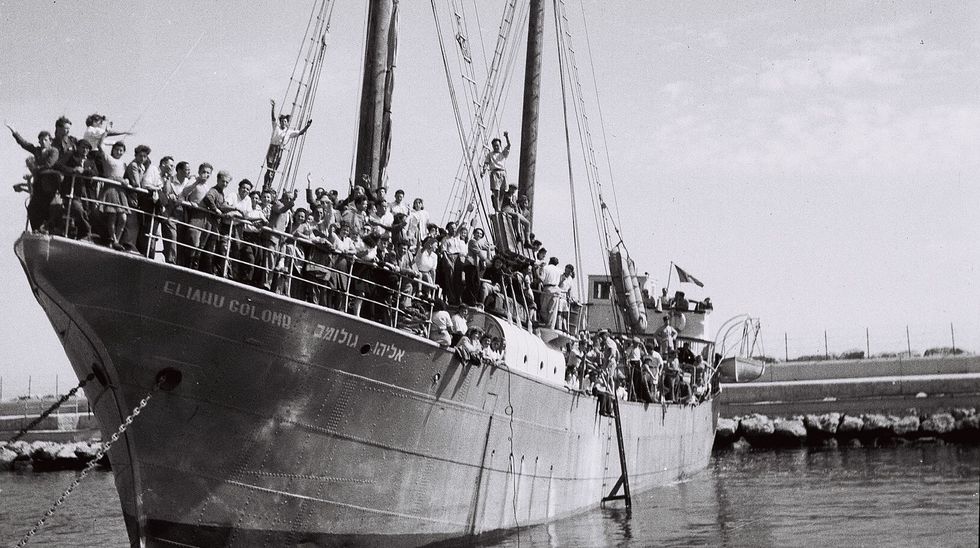While the United States cherish their identity as a nation of immigrants, immigration policies of the country are historically characterized by cycles of openness and xenophobia.
The overflows anti-immigrant sentiments among the political leaders and the general public are powered by a debate on who is worthy to be considered for the full integration in the nation, and who is unable to assimilate and assume the characteristics and responsibilities associated with being an American. The legality of immigration came into existence in 1965.
It is something more complicated than it sounds and known. “People engage in international migration for many different reasons; they may be aware of wage differences between their home communities and destination areas; foreign employers may recruit them. They may be afraid for their safety due to political unrest at home or economic changes in their communities may have eroded traditional means of subsistence” (Anderson, 2010).
The majority of people tend to know the meaning of being illegal, and how some people end up falling into the category of being illegal, and it seems to be right and reasonable that people should be divided based on documents, citizenship, and other divisions with different rights. They believe that everyone belongs to one country and supposes to stay in that country until they receive permission to migrate into another one. Each nation expresses its sovereignty by deciding who is allowed to enter into its territory and who is allowed access to citizenship” (Chomsky, 23). Everyone is a citizen of the earth, and no law or science should have differentiated us into the nations and citizens of the specific country or even a particular race because nothing is natural about this state of affairs. “Countries, sovereignty, citizenship, and laws are all social constructions, i.e., abstractions invented by humans” (Chomsky, 23).Furthermore, we utilize them to justify differences in legal status. Why we never ask ourselves about the reason countries need to decide who can migrate and treat others differently under the law depending on the standings those same countries assign them.
The Mexican immigration to the United States is fundamentally an economic phenomenon, the automatic result of growing demand for labor in one of the two countries, and a supply of workers available in the other. Final immigration and temporary migration of employment are complicated to distinguish as long as the border between Mexico and the United States remains mostly open and that the Mexican migrant does not interest the Border Patrol.The Mexican migration to the United States becomes noticeable at the end of the nineteenth century when the construction of railways and the agricultural development by irrigation create a call of the workforce in the States of the southwest; the Mexican just replace the Chinese, officially undesirable since the Exclusion Act of 1882.
In the twentieth century, we can divide the history of this migration in two major phases, separated by the economic crisis of the 1930s. When the United States entered the war in 1941, the agricultural sector acquires a strategic value; the mobilization is resulting in a shortage of labor in this sector, the administration of the food for the war, the Department of Labor and the Immigration Services establish a program for the recruitment of workers. The U.S. and Mexican governments signed an agreement which is the Mexican Farm Labor Agreement of 23 July 1942, created for the duration of the war, and that will follow the Bracero Program in 1948-1950; the import of workforce seasonal Mexican was then institutionalized as a permanent mechanism, 1951 to 1964. The novelty of this agreement is that the two governments are organizing the migration; candidates were selected in three Mexican centers (Guaymas, Chihuahua, Monterrey). Then the U.S. government provided them with means of transport and travel expenses; it guaranteed a minimum hourly wage (30 cents), duration of employment effective equal to three-quarters of the period provided for by the contract, and to ensure that the allocation of housing (in general military barracks).“The low wages of undocumented workers helped contribute to the housing bubble by making building costs artificially cheap” (Chomsky, 131). To recover a part of the expenses; the Government lifted a tax of $15 per contract (and $25 deposit) payable by American employers.
Contrary to popular belief, immigration has benefited the US economy and has had little effect on the general wage gap and the labor market, if migration can reduce the wages of low-skilled, skilled immigrants play a very positive role in innovation and salaries. Also, second-generation immigrants - people born in the United States to parents born abroad - contribute to the economy as taxpayers and as workers. Also,the prospects for long-term economic growth in the United States would be considerably diminished without the contribution of highly skilled immigrants. But while immigration has benefited the nation as a whole, the report notes that some regions face increased challenges. Over the next seventy-five years, researchers predict that the economic impact of immigration will be positive at the federal level and harmful at the state and local levels, due to pressure on resources and resources. Reducing funding for schools or other programs for immigrants would be unfair because having educated labor is necessary for long-term economic growth.
Blocking illegal immigration from the Caribbean and Central America to the United States is a long-term goal. However, it is now part of the new security doctrine of the White House, which closely links politics to the expansion of free trade and which requires from the countries of departure or countries of transit cooperation in the unprecedented matter. If the new "rules of the game" provide the United States with a certain influence on the control of migration on the American continent, the concrete results about the objectives are far from satisfactory. Indeed, the control of migratory flows by "all control" is illusory since illegal immigration persists. It is, therefore, necessary to recognize that there are no simple solutions to solve a problem as complex as migration. Also, a real migration policy must give way to an analysis of real situations, be conducted jointly by the parties in question-based on the interests of each and place the benefit of the people at the center of the issues because it is he who is, first, concerned by all these measures.
In recent years, the migration issue has provoked turmoil and perplexity in the domestic political debate in the United States, giving rise to profoundly divergent views on how to control borders and deal with immigrants, whether illegal or not, within of the nation. That immigration is the subject of controversy is, from one point of view, not surprising. In absolute terms, the number of immigrants residing in the United States - approximately 35 million - is at historic levels. In relative terms, foreign-born population density is approaching the peaks recorded in the two previous waves of migration, from the 1830s to the 1850s and the 1880s to the 1920s. Moreover, the current wave, which began in the 1960s extended well beyond the two areas of the country - the Northeast and West Coast - in which most immigrants from earlier eras had concentrated. Florida, Texas, Georgia, North Carolina, Virginia, Arizona, and Colorado are among the States that now have large immigrant populations. In these States and, indeed, across the country, even more than in the past, immigrants were dispersed in secondary cities and even in small towns.
As a result, immigration, in demographic terms, is in some ways it is a more "national" phenomenon today than at any other time in American history. Today's immigrants are also the most diverse group of foreigners ever to come to the United States and are the first to be mostly non-European, mostly from Latin America, the Caribbean, Asia, and the Caribbean. East and South, and to a lesser extent, Africa. Finally, it is the most "illegal" wave of immigration in the history of the country, in the sense that twelve million immigrants, representing some 15 to 25% of the total immigrant population, entered the United States without a passport. Valid, neither visa nor residence card. Given these circumstances, it would be surprising that Americans, born in the country or abroad, do not question the presence of immigrants on the Internet. The prospects it opens up and the problems it brings.
The massive farm crisis and Mexican Agrarian the years 1966-1976 generates each year of new cohorts of braceros illegal, while the official program is closed, in 1964, under the pressure of the American unions, population and the Chicana (north- Americans of Mexican descent) who sees a competitor in each migrant. The maintenance of this illegal migration, even during the program of the braceros highlights two essential factors to understand the Mexican emigration. The request for cheap labor on the part of the agribusiness exceeded the volume of legal quotas, and on the other hand, the Mexican migrant often distrusted abuses by the Mexican authorities. Increasingly, illegal students are mobilizing to obtain the adoption of the Dream Act by the Congress, which would open the way for regularization, and, in a second phase, that of naturalization (which of course remains an individual initiative). Some even went to Congress in Washington.All intermediaries corrupt, and preferred to try its chance in the illegality, ensure to find a job, the latter in turn facilitating legalization of stay. In this perspective the jerks and shifts in the policy of control and eviction of the migration. To talk about the solution, we must identify the problems and their origins.
References
1. Anderson, Oliver C. Illegal Immigration: Causes, Methods, and Effects. Nova Science Publishers, Inc, 2010. Global Political Studies. EBSCOhost, saintleo.idm.oclc.org/login?url=http://search.ebscohost.com/login.aspx?direct=true....
2. Chomsky, Aviva, 1957-. Undocumented: How Immigration Became Illegal. Boston: Beacon Press, 2014. Print.
3. Newton, Lina. Illegal, Alien, or Immigrant: The Politics of Immigration Reform. NYU Press, 2008. UPCC Book Collections on Project MUSE. EBSCOhost, saintleo.idm.oclc.org/login?url=http://search.ebscohost.com/login.aspx?direct=true....








































